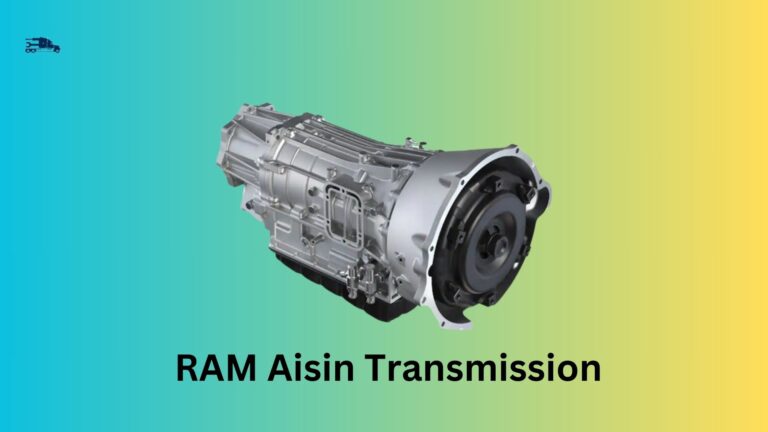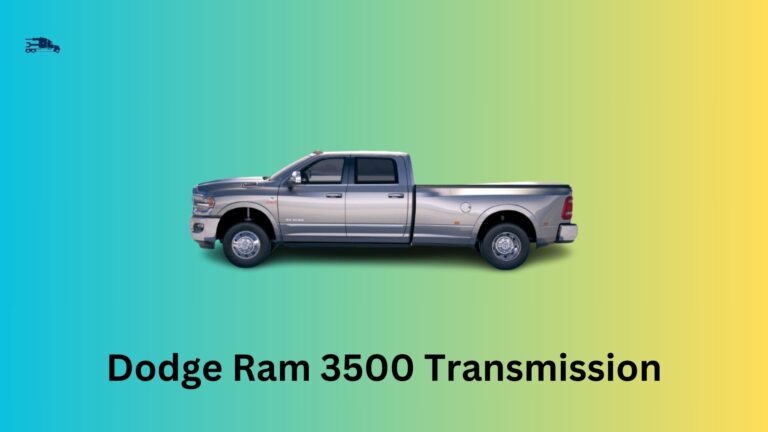Are you experiencing transmission issues with your Ram 3500 truck? Don’t worry, we’ve got you covered! In this blog post, we’ll delve into the common problems faced by Ram 3500 owners when it comes to their transmissions. From slipping gears to delayed engagement and fluid leaks, we’ll explore the causes and offer practical solutions.
Table of Contents
Common Transmission Problems in Ram 3500
Is your Ram 3500 experiencing transmission issues? Let’s dive into some of the common problems you might encounter and explore practical solutions to get your truck back on track.
1. Slipping Gears
Slipping gears can be a frustrating problem that affects your driving experience. It refers to when the transmission fails to maintain a steady gear position, causing unexpected changes or loss of power. This can be caused by low fluid levels or worn-out clutch plates. Not only does it compromise vehicle safety but also impacts overall performance and fuel efficiency. To resolve this issue, it is crucial to address the root cause by checking and replenishing fluid levels or replacing damaged clutch components.
2. Delayed Gear Engagement
Delayed gear engagement occurs when there is a noticeable delay between shifting gears, resulting in poor acceleration response. Symptoms may include hesitation or a lag before the desired gear engages. Faulty solenoids or internal pressure loss are common culprits for this problem. If left unaddressed, it can lead to drivability issues and potentially cause damage to other transmission components over time. Seeking professional help for diagnosis and repair is recommended in such cases.
3. Transmission Fluid Leaks
Identifying signs of transmission fluid leaks, such as puddles forming under your vehicle, is crucial for preventing further damage. Leaks often occur at seals, gaskets, or due to damaged components within the system. The consequences of these leaks include overheating due to reduced lubrication and potential long-term damage if not addressed promptly. Fixing leaks involves identifying their source accurately through inspections and replacing faulty parts like seals or gaskets.
4. Erratic Shifting
Erratic shifting manifests as shuddering or jerking during acceleration or deceleration—an uncomfortable experience for both driver and passengers alike! The electronic control unit malfunctions or worn-out shift solenoids are frequent causes of this issue. Inconsistent shifting not only affects fuel efficiency but also puts additional strain on the engine and compromises ride comfort. Professional diagnosis is recommended to identify the exact cause and determine whether repairs or replacements are necessary.
5. Torque Converter Issues
The torque converter plays a vital role in automatic transmissions, providing a connection between the engine and the transmission system. Potential problems with the torque converter include lock-up clutch failure or inadequate torque multiplication ratio. These issues can lead to poor acceleration or increased RPMs without power delivery, affecting both performance and fuel economy. Addressing torque converter issues may involve repairing or replacing damaged components, ensuring optimal functionality.
6. Overheating Transmissions
Transmission overheating can be a serious concern for any vehicle, including the Ram 3500. Insufficient cooling, high loads, or excessive towing can contribute to this problem. The consequences of an overheating transmission are significant and include a reduced lifespan of internal components and even potential catastrophic failure. Regular maintenance is essential to prevent overheating. Make sure to check fluid levels regularly, ensure proper cooling system function, and address any leaks promptly.
7. Check Engine Light Issues
If you notice the dreaded Check Engine Light illuminated on your dashboard, it could indicate a transmission problem in your Ram 3500. This warning light often signifies an issue with various components within the transmission system itself or related systems such as sensors or solenoids. To resolve this problem effectively, it’s crucial to have the vehicle diagnosed by a professional technician who can use specialized tools to pinpoint the exact cause of the issue.
8. Noise and Vibration
Unusual noises or vibrations coming from your truck’s transmission should never be ignored as they may signify underlying problems. These symptoms can indicate worn-out bearings, damaged gears, or other mechanical issues within the transmission system. Seeking professional assistance is recommended for proper diagnosis and repair because ignoring these signs may lead to more severe damage over time.
9. Transmission Control Module (TCM) Failure
The TCM plays a vital role in controlling various aspects of automatic transmissions in modern vehicles like the Ram 3500. When TCM failure occurs due to electrical malfunctions or software glitches, it can result in erratic shifting behavior, stalling issues while driving, or complete loss of power. Addressing TCM failure requires professional diagnosis and potential replacement of the module to restore proper functionality.
10. Solenoid Issues
The solenoids within the transmission system act as control valves, regulating fluid flow and gear engagement. Faulty or malfunctioning solenoids can cause shifting problems, such as harsh shifts or failure to shift gears altogether. These issues may arise due to electrical faults, wiring problems, or mechanical failures within the solenoid itself. Professional inspection and repair are crucial for resolving these issues effectively.
Related articles:
RAM Aisin Transmission Problems
Aisin Seiki AS68RC Transmission Problems
2019 Ram 2500 Transmission Problems
Dodge Ram 3500 Transmission Problems
Aisin Automatic Transmission Problems
2023 Ram 3500 Aisin Transmission Problems
2022 Ram 3500 Aisin Transmission Problems
2020 RAM Aisin Transmission Problems
2021 Ram Aisin Transmission Problems
2019 Ram 3500 Aisin Transmission Problems
FAQs on Ram 3500 Transmission Problems
1: What are some common signs that indicate slipping gears in a Ram 3500?
Slipping gears can be identified by symptoms like RPM fluctuations without corresponding speed changes, sudden loss of power or acceleration, and a burning smell from the transmission.
2: How can I prevent my Ram 3500’s transmission from overheating?
Regular maintenance is key to preventing transmission overheating. Ensure proper fluid levels and quality, check for leaks, keep the cooling system in good condition, and avoid excessive loads or aggressive driving.
3: Why does my Ram 3500 experience delayed gear engagement?
Delayed gear engagement may stem from issues such as faulty solenoids or internal pressure loss within the transmission system. These problems can disrupt smooth gear transitions and result in slower response times.
4: Are there any DIY solutions for fixing transmission fluid leaks in a Ram 3500?
While minor leaks due to loose connections or damaged seals might be fixable by an experienced individual with appropriate tools, it is generally recommended to seek professional help for identifying and repairing transmission fluid leaks, as they often require specialized knowledge and equipment.
Conclusion
Understanding the common transmission problems in your RAM 3500 is essential for maintaining its performance and longevity. From slipping gears to fluid leaks and overheating, timely attention and professional assistance are crucial. While repair costs may vary, being proactive with regular maintenance can help avoid potential issues down the road. Keep your Ram 3500 running smoothly and enjoy a worry-free driving experience!



